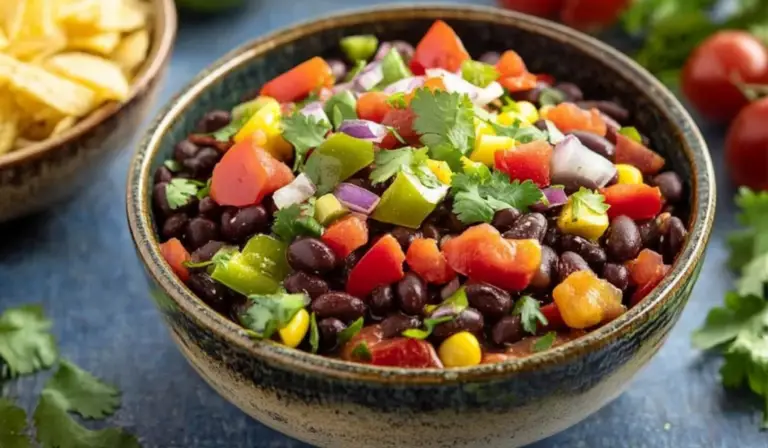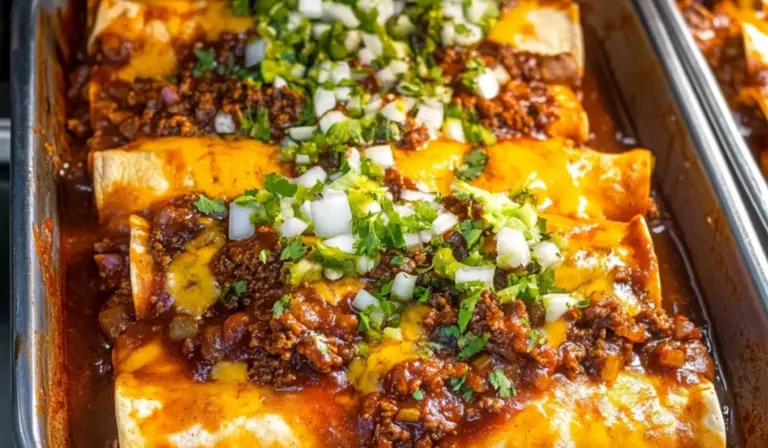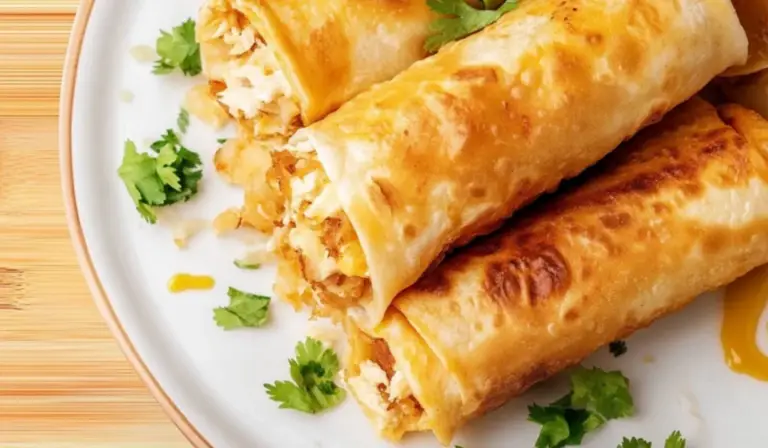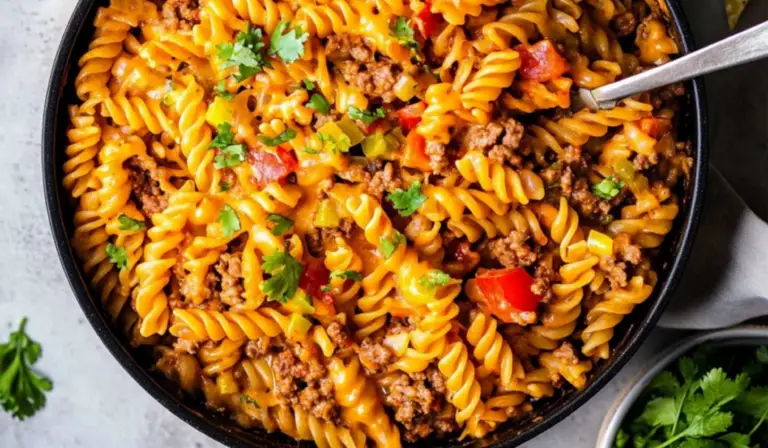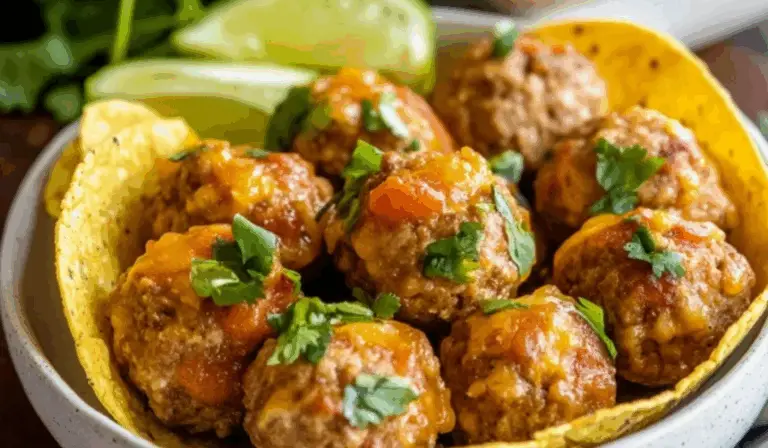Mastering Avocado Salsa: A Beginner’s Guide to a Creamy, Flavorful Classic
Imagine sitting at a vibrant Mexican restaurant, dipping a crispy tortilla chip into a smooth, tangy, and slightly spicy avocado salsa. The first bite is a perfect blend of roasted jalapeños, citrusy lime, and creamy avocado. This delicious salsa is a staple in many Mexican kitchens, used not just as a dip but as a flavorful topping for tacos, burritos, and grilled meats.
PrintMastering Avocado Salsa: A Beginner’s Guide to a Creamy, Flavorful Classic
Love guacamole? Love salsa verde? Then you’ll be obsessed with this Avocado Salsa! It’s smooth, tangy, and just the right amount of spicy—perfect for dipping, drizzling, or spooning over your favorite Mexican dishes. Made with fresh ingredients and ready in minutes, this easy recipe is a must-try for any salsa lover. Who’s making this creamy, dreamy dip today?
#CreamyAvocadoSalsa 🥑 #SalsaLover ❤️ #MexicanInspired 🌮 #FreshAndFlavorful 🍃 #DipIntoDelicious 🤤 #ZestyAndSmooth 🍋 #HealthyEats 🔥 #HomemadeGoodness 🍽️ #EasyAndTasty ⏳ #PerfectPartyDip 🎉
- Prep Time: 10 minutes
- Cook Time: 5 minutes
- Total Time: 15 minutes
- Yield: 4 servings 1x
Ingredients
- 4–5 medium tomatillos
- 1 clove garlic (skin on)
- 1 medium jalapeño
- 2 Haas avocados
- ¼ teaspoon lime zest
- 2 teaspoons lime juice
- ¼ cup fresh cilantro
- ½ teaspoon kosher salt
- ¼ cup white onion, minced
Instructions
Step 1: Preparing the Vegetables
- Remove the husks from the tomatillos and rinse them thoroughly under warm water to remove the sticky residue. Slice them in half crosswise.
- Slice the jalapeño in half lengthwise and remove the seeds and white membrane for a milder salsa. If you prefer more heat, leave some seeds in.
- Keep the garlic clove whole with the skin on.
Step 2: Roasting the Vegetables
- Heat a dry skillet over medium-high heat. No oil is needed.
- Place the tomatillos, jalapeño halves, and garlic in the skillet.
- Cook for about 5-6 minutes until the tomatillos start to blister and soften, turning them occasionally for even roasting. The jalapeños should develop a slight char, and the garlic should soften inside the skin.
- Remove from heat and let them cool slightly.
Step 3: Blending the Base
- Peel the roasted garlic and discard the skin.
- Transfer the tomatillos, jalapeño, and garlic to a food processor or blender.
- Pulse a few times until the mixture is smooth.
Step 4: Adding the Fresh Ingredients
- Add the cilantro, lime zest, lime juice, and salt to the food processor.
- Pulse a few more times until everything is well combined.
Step 5: Incorporating the Avocado
- Cut the avocados in half, remove the pits, and scoop out the flesh.
- Add the avocado to the food processor and blend until smooth and creamy. If you prefer a chunkier texture, blend it less or mash the avocados separately before mixing them in.
- Taste and adjust seasoning, adding more salt or lime juice as needed.
Step 6: Serving and Garnishing
- Transfer the salsa to a serving bowl.
- Sprinkle with minced white onion and extra cilantro leaves for garnish.
- Serve immediately with tortilla chips, tacos, burritos, or as a topping for grilled chicken or beef.
Notes
- How to Pick Ripe Avocados: The best avocados for this recipe are slightly soft when gently squeezed. If they’re too firm, they need more time to ripen. If they feel mushy, they may be overripe.
- Preventing Browning: Avocado-based salsas can turn brown due to oxidation. To keep it fresh, press a piece of plastic wrap directly onto the surface before storing it in the fridge.
- Adjusting the Spice Level: If the salsa is too spicy, add more avocado or a bit of sour cream to mellow the heat. If it’s too mild, add a pinch of cayenne pepper or an extra roasted jalapeño.
- Blender vs. Food Processor: A food processor will give a smoother salsa, while a blender may require some liquid (extra lime juice or water) to blend properly.
If you’re new to cooking, avocado salsa is the perfect recipe to start with. It requires minimal ingredients, takes only about 15 minutes to make, and offers a fresh, homemade alternative to store-bought salsas. Plus, it’s incredibly versatile—you can adjust the spice level, add different herbs, or use it in multiple dishes.
This guide will walk you through every step of making avocado salsa, from selecting the right ingredients to troubleshooting common mistakes. By the end, you’ll have a creamy, restaurant-quality salsa that will impress your family and friends.
Why This Recipe is Perfect for Beginners
Cooking can feel intimidating, but avocado salsa is a great place to start. Here’s why:
- Simple Ingredients: Most of the ingredients are pantry staples or easy to find at any grocery store.
- Quick and Easy: You don’t need hours in the kitchen. With just 10 minutes of prep and 5 minutes of cooking, you’ll have a flavorful salsa ready in no time.
- No Special Equipment Required: While a food processor makes things easier, you can also use a blender or mash everything by hand for a chunkier texture.
- Versatile: Use this salsa as a dip, a topping, or even a sandwich spread. It pairs well with grilled chicken, beef, and seafood.
Now, let’s dive into the details and make a perfect batch of avocado salsa.
Ingredients and Preparation
Before you start, gather all your ingredients.
Ingredients (Serves 4)
- 4-5 medium tomatillos
- 1 clove garlic (skin on)
- 1 medium jalapeño
- 2 Haas avocados
- ¼ teaspoon lime zest
- 2 teaspoons lime juice
- ¼ cup fresh cilantro
- ½ teaspoon kosher salt
- ¼ cup white onion, minced
Ingredient Notes and Substitutions
- Tomatillos: These small, green, husked fruits add a tart flavor to the salsa. If you can’t find fresh tomatillos, you can use canned tomatillos (drained) or substitute with green tomatoes, though the flavor will be slightly different.
- Jalapeño: This provides mild heat. For a spicier salsa, leave the seeds in or substitute with serrano peppers. If you prefer it milder, use half a jalapeño or replace it with a small amount of bell pepper.
- Avocados: Haas avocados are best for their creamy texture. Choose ripe avocados that yield slightly when pressed.
- Cilantro: Adds freshness, but if you dislike cilantro, you can substitute with fresh parsley or a small amount of green onions.
- White Onion: Provides a sharp bite. Red onion can be used for a slightly sweeter taste.
Step-by-Step Instructions
Step 1: Preparing the Vegetables
- Remove the husks from the tomatillos and rinse them thoroughly under warm water to remove the sticky residue. Slice them in half crosswise.
- Slice the jalapeño in half lengthwise and remove the seeds and white membrane for a milder salsa. If you prefer more heat, leave some seeds in.
- Keep the garlic clove whole with the skin on.
Step 2: Roasting the Vegetables
- Heat a dry skillet over medium-high heat. No oil is needed.
- Place the tomatillos, jalapeño halves, and garlic in the skillet.
- Cook for about 5-6 minutes until the tomatillos start to blister and soften, turning them occasionally for even roasting. The jalapeños should develop a slight char, and the garlic should soften inside the skin.
- Remove from heat and let them cool slightly.
Step 3: Blending the Base
- Peel the roasted garlic and discard the skin.
- Transfer the tomatillos, jalapeño, and garlic to a food processor or blender.
- Pulse a few times until the mixture is smooth.
Step 4: Adding the Fresh Ingredients
- Add the cilantro, lime zest, lime juice, and salt to the food processor.
- Pulse a few more times until everything is well combined.
Step 5: Incorporating the Avocado
- Cut the avocados in half, remove the pits, and scoop out the flesh.
- Add the avocado to the food processor and blend until smooth and creamy. If you prefer a chunkier texture, blend it less or mash the avocados separately before mixing them in.
- Taste and adjust seasoning, adding more salt or lime juice as needed.
Step 6: Serving and Garnishing
- Transfer the salsa to a serving bowl.
- Sprinkle with minced white onion and extra cilantro leaves for garnish.
- Serve immediately with tortilla chips, tacos, burritos, or as a topping for grilled chicken or beef.
Beginner Tips and Notes
- How to Pick Ripe Avocados: The best avocados for this recipe are slightly soft when gently squeezed. If they’re too firm, they need more time to ripen. If they feel mushy, they may be overripe.
- Preventing Browning: Avocado-based salsas can turn brown due to oxidation. To keep it fresh, press a piece of plastic wrap directly onto the surface before storing it in the fridge.
- Adjusting the Spice Level: If the salsa is too spicy, add more avocado or a bit of sour cream to mellow the heat. If it’s too mild, add a pinch of cayenne pepper or an extra roasted jalapeño.
- Blender vs. Food Processor: A food processor will give a smoother salsa, while a blender may require some liquid (extra lime juice or water) to blend properly.

Serving Suggestions
Avocado salsa is more than just a dip for chips—it’s a versatile addition to many dishes.
- Tacos and Burritos: Drizzle over grilled chicken, shredded beef, or roasted vegetables.
- Grilled Meats: Use it as a topping for grilled chicken or steak to add freshness and creaminess.
- Eggs: Spoon over scrambled eggs or omelets for extra flavor.
- Salads: Mix with a little olive oil to create a creamy avocado dressing.
- Sandwich Spread: Use instead of mayonnaise for a healthier alternative.
Storage and Make-Ahead Tips
- Short-Term Storage: Avocado salsa is best eaten fresh, but it can be stored in an airtight container in the fridge for up to 4-5 hours.
- Longer Storage: If you need to store it overnight, press plastic wrap directly onto the surface and seal the container tightly. The color may darken slightly, but the flavor will remain.
- Freezing: While avocados don’t freeze well in their raw form, this salsa can be frozen for up to a month in an airtight container. Let it thaw in the fridge and give it a good stir before serving.
Conclusion: A Beginner-Friendly Recipe to Master
Making avocado salsa at home is a simple yet rewarding experience. With just a few fresh ingredients and easy steps, you can create a creamy, flavorful dip that’s perfect for any occasion. Whether you use it as a topping for tacos, a dip for chips, or a spread for sandwiches, this versatile salsa will quickly become a staple in your kitchen.
Now it’s your turn—try this recipe and let us know how it turns out. Do you prefer it spicier? Chunkier? Share your experience in the comments and experiment with different variations. Cooking is all about making a recipe your own, and this avocado salsa is the perfect place to start.



